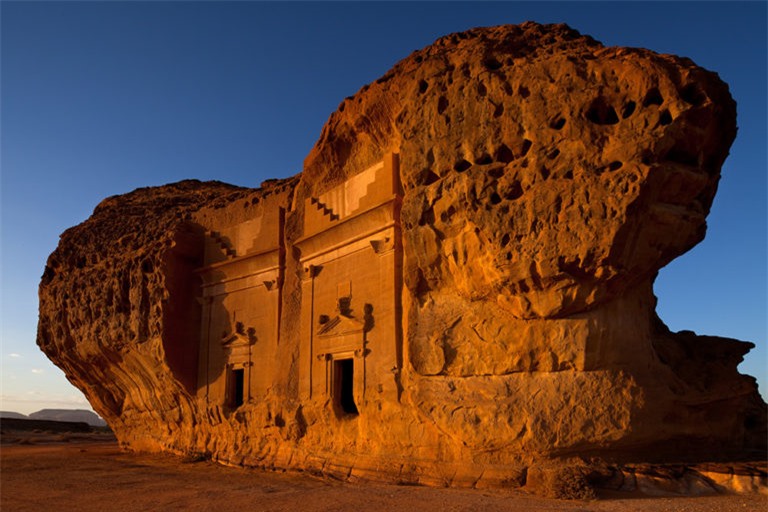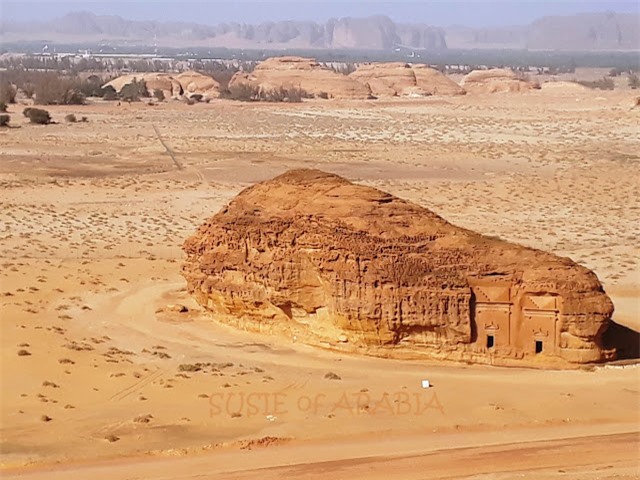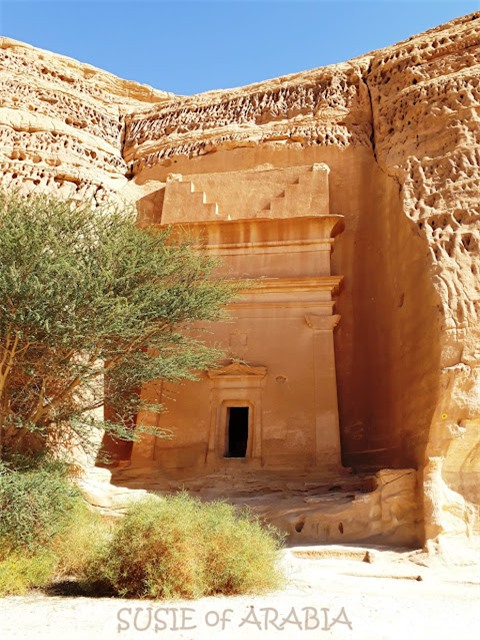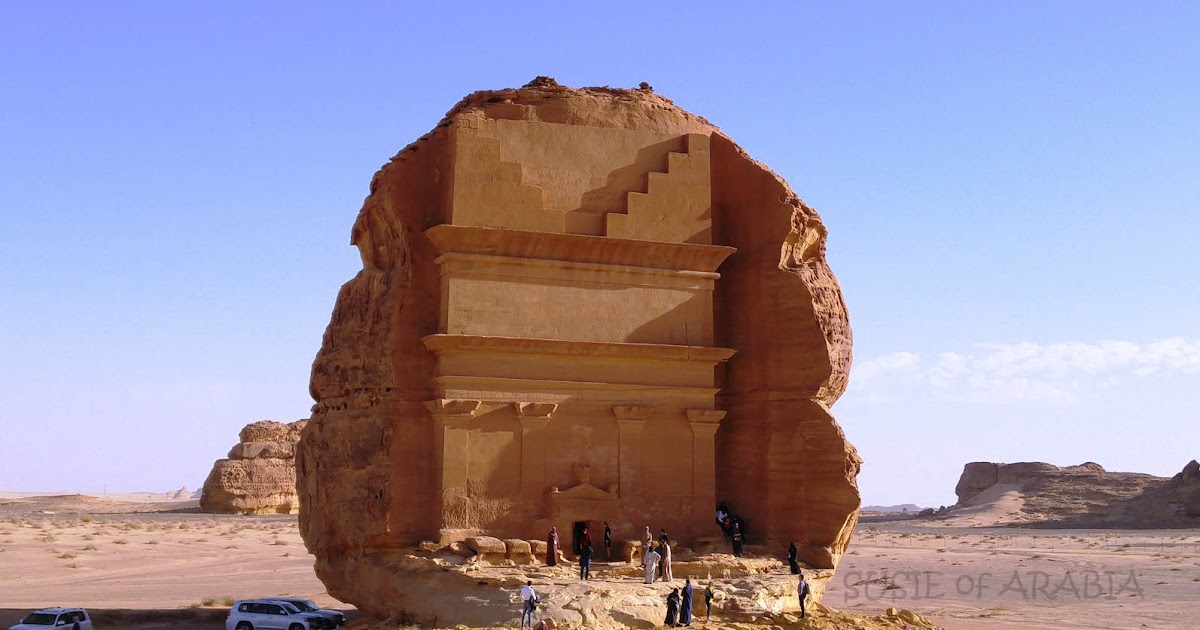The mystery of Madain Saleh’s tomb is located in the desert of Saudi Arabia
Madain Saleh is located 20 km northwest of Al-`Ula town and 500 km southeast of Medina. It lies on a flat area, at the foot of the basalt plateau that is part of the Hijaz mountain range. To the west and northwest of the area there is an aquifer at a depth of 20 meters. It is a remarkable feature of the desert landscape with sandstone slabs of various sizes and heights. Based on various sources and inscriptions on the tomb, Madain Saleh built and developed the surrounding residential area during the period from 1 BC.

The tombs at Madain Saleh were hand-carved with rudimentary tools into the giant sandstone rocks outside Al Ula, Saudi Arabia. Some of the tombs were never completed, but the tombs all had one thing in common in terms of design – above the entrance to the mausoleum, there were steps that were meant to lead the mausoleum’s occupants to heaven. There are relics of the Kingdom of Nabatea (1st century AD) and it is the largest settlement in the south of the kingdom, after the kingdom’s capital, Petra. In addition, some vestiges related to the Lihyan period and the Roman Empire have also been found here.

Historically, the entire region was located at the location of a strategic trade route linking southern Arabia with important locations to the north, such as Iraq, Syria, Egypt and Jordan. This area included the Nabataean Kingdom, which ran from southern Arabia along the Red Sea all the way to Jordan to Damascus, Syria. The Nabataeans were originally nomads who herded sheep, goats, and camels in the desert as many other Arab tribes did for millennia.
However, they later decided to live in oases, using wells dug in the rock for agriculture. Their origin has not been confirmed so far, but it is likely that their ancestors came from the Hejaz region, northwestern Saudi Arabia. The gods they worshiped are similar to the gods that were practiced by the ancient cultures of the region. From their earliest historical times, they have been associated with Mesopotamia and possibly the Nabatu Arabs mentioned by the Assyrians in the eighth century BC. They are people who lead an ascetic life with strict rules. They are also known for their ability to go deep into that desert to hide from other tribes and enemies.

However, there are also many sources that suggest that the Nabataeans were originally nomadic Bedouins, who later became wealthy by levying taxes on caravans passing through their territory – they took control of the land. controls much of the spice trade in the region. Frankincense, myrrh and other spices from southern Arabia were brought north along trade routes to the Greeks, Egyptian Romans, Phoenicians and others around the Mediterranean. and Near East buy. The Nabataeans built their empires as middlemen. Hegra is the crossroads where the main north-south road meets the road from the Red Sea to the Persian Gulf.

Madain Saleh is home to more than 130 such tombs. After the Nabataeans were taken over by the Roman Empire, cheaper and faster alternative transportation across the Red Sea became the preferred method for commercial shipments, as opposed to struggling with the elements. harshness of caravan conditions in the desert. As trade in the desert declined, the once prosperous Nabataean civilization also suffered and weakened.

In 2008, Madain Saleh became a National Heritage and the first UNESCO World Heritage Site in Saudi Arabia. It is a testament to the Late Antiquity, especially the more than 130 monumental and elaborate cut stone structures with decorated facades that testify to the development of the Kingdom of Nabatea. The long history has caused the civilizations that settled here to come up with a number of different names. According to references by the historian Strabo and other Mediterranean writers, Hegra is the name that was used during the Kingdom of Nabatea. The current name is related to the Prophet and messenger in Islam, Saleh. Meanwhile, the name Al-Hijr (Arabic: الحجر, “Stone Mountain” or “Stone Place”) is also used to describe the terrain.

Madain Saleh’s most iconic mausoleum is the Qasr al-Farid, a single tomb carved into a single block of rock lying in the open air. However, its facade was never completed. This mausoleum is 4 stories high, which means it is dedicated to a rich and influential person in society. Unlike other tombs in the surrounding area, Qasr al-Farid has four pillars instead of two. Qasr al-Farid is one of the most famous tombs in Madain Saleh, and is so named due to the fact that it is completely isolated from other mausoleums in the area. This is unusual, as most of the monumental tombs in Madain Saleh found were made in groups, such as the Qasr al-Bint mausoleum, the Qasr al-Sani mausoleum, and the Jabal al-Mahjar area mausoleum. .
at Blogtuan.info – Source: danviet.vn – Read the original article here


